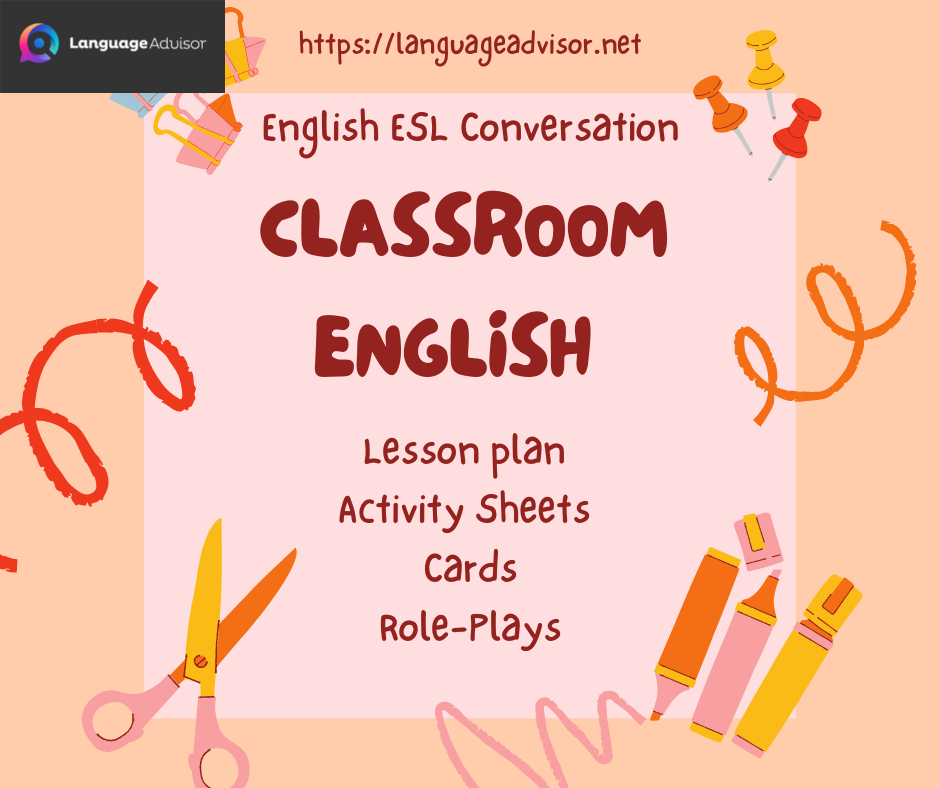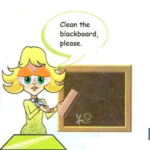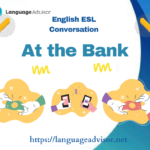English ESL Conversation: Classroom English. Get it Right From the Start. An Activity to teach students how to ask for information when they don’t understand what was said to them.
English ESL Conversation: Classroom English
Classroom English: Get it Right From the Start
Level:
I’ve used this lesson on all ages of beginning to intermediate students students from elementary grade 5 to university.
In the case of children, this lesson will not be suitable for absolute beginners. Usually, it’s more appropriate for students who have a basic ability in English.
Target:
The aim of this lesson is to teach students how to ask for information when they don’t understand what was said to them.
Preparation:
First print the activity sheet and activity cards. Photocopy one activity sheet for each student in the class, and make one set of cards for each group of four or five students.
It works well if you paste the card sheet on to cardboard and then cut out the cards.
Introduction:
After going through your regular review and teacher talk, tell the students that you ‘read a great book about dinoflagellates’ . . .or whatever, just so long as the word is incomprehensible.
See what responses this elicits and write them on the board.
One by one, write the five target questions on the board and compare what they say or didn’t say with what they should have said.
Now choose one of the cards and and try a sample run of the activity that you are going to do.
Go through the card question by question, writing questions on the board.
Group Activity
Break the students up into groups of four or five.
One student draws a card and the other students take turns asking questions. Usually, I have the students go around in a circle where the student to the left of the student who drew the card asks the first question and so on.
After the card is finished, another student draws a card and the process begins again.
Repeat until the whole activity sheet is filled out.
Wrap Up
The students break up their groups and come together as a class again. Quickly, try the routine as a class without letting the students look at their sheets.
Usually, I pretend to pick up two new cards:
I am reading a book about glaciers.
And:
Yesterday, I bought a new telescope.
The students go through questions and answers as a class, hopefully, without having to look at their sheet.

Target:
- (1) Can you repeat that please?
- (2) How do you spell __________?
- (3) What does __________ mean?
- (4) Can you give me an example?
- (5) How do you say ___________ in Japanese/Spanish/French . . .?
- ‘I read a good book about dinoflagellates”
- Huh? Dino . . ..
- Teacher: I’m reading a book about amphibians.
- Students: Can you repeat that please?
- Teacher: I said, “I’m reading a book amphibians.”
- Students: How do you spell amphibians?
- Teacher: A-M-P-H-I-B-I-A-N-S
Students write down amphibians on their activity sheet beside ‘Word’.
- Students: What does amphibian mean?
- Teacher: It’s an animal that is born in water but can live on land.
- Students write down the meaning on their activity sheet beside ‘meaning’.
- Students: Can you give me an example?
- Teacher: A frog.
- Students write down ‘frog’ on their activity sheet beside ‘example’.
- Students: How do you say amphibian in Korean (or whatever language they speak)?
- Teacher: In Korean you say ‘Yangseoryu’.
Method 1
- Student: I took off the bus.
- Teacher: You mean you got off the bus. You ‘ get off’ a bus not ‘take off’ a bus.
Method 2
- Student: I took off the bus.
- Teacher: Ah. You got off the bus and then where did you go?
- (or) I see. Where did you go when you got off the bus?





All downloads are in PDF format
DOWNLOAD THE PDF FOR FREE
Lesson Plan





Activity Sheet and Cards










